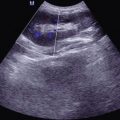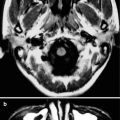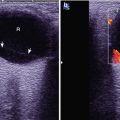(1)
Radiology Department Beijing You’an Hospital, Capital Medical University, Beijing, People’s Republic of China
Abstract
Blood is most closely related to HIV infection. Firstly, blood provides an environment for survival of HIV. After HIV gains access to the blood, it attacks the CD T lymphocytes. With the decrease of CD T lymphocyte count, HIV infection gradually progresses into AIDS. Meanwhile, the static CD T lymphocytes constitute reservoir for incubation of HIV. The incubated HIV fails to be eliminated by ART treatment.
Keywords
Blood and HIV InfectionDrug Abuse and HIV InfectionSexual Behaviors and HIV InfectionMental Health and HIV InfectionSocial Customs & Ethics and HIV Infection12.1 Blood and HIV Infection
Blood is most closely related to HIV infection. Firstly, blood provides an environment for survival of HIV. After HIV gains access to the blood, it attacks the CD T lymphocytes. With the decrease of CD T lymphocyte count, HIV infection gradually progresses into AIDS. Meanwhile, the static CD T lymphocytes constitute reservoir for incubation of HIV. The incubated HIV fails to be eliminated by ART treatment.
Secondly, blood transmission is one of the three routes of HIV transmission, including spreading via blood transfusion, blood products use, intravenous drug abuse and iatrogenic transmission due to no or incomplete sterilization of syringes, needles, surgical instruments, oral instruments or obstetric instruments. In daily life, incomplete sterilization of hairdressing instruments, beauty instruments and pedicure knives in bathroom, or sharing razors, toothbrushes with others could also transmit HIV.
As modern medicine develops, the application of blood transfusion and blood products is being increasingly extensive, which saves numerous lives. However, transfusion of HIV contaminated blood or blood products indicate that HIV is directly transfused into recipients’ blood circulation. Blood constituents like coagulation factor VII are extracted from plasma of donors’ blood, with higher risk of being contaminated by HIV. In some countries, blood safety is not secured and the blood recipients thus have higher risks of HIV infection. HIV infection via blood rapidly progresses into AIDS, with a mean of 3–5 years (in children, about 2 years). In the early 1980s, coagulation factor VII produced in the United States caused worldwide HIV infection in patients with hemophilia. A blood sampling centre in France was once contaminated by HIV and caused thousands of healthy recipients were infected. In 1990s, blood donation and supply was managed privately in some local areas of China and caused HIV infection in some blood donators. These cases have taught us a lesson. Currently, screening of blood donors has been strengthened in developed countries. In China, the management of blood donors and blood products has been strengthened.
To reduce HIV transmission via blood transfusion, screening of blood and blood products should be the starting point. In addition, unnecessary and inappropriate blood transfusion should be greatly reduced and prohibited.
12.2 Drug Abuse and HIV Infection
Drugs include opium, heroin, morphine, marijuana, cocaine and other narcotic and psychotropic drugs which could cause serious drug dependence. In China, some common drugs nowadays include heroin, opium, marijuana, crystal meth and ecstasy. Drug abuses include oral, inhaling and intravenous uses of drugs for non-medical purposes.
Drug abuse is one of the main routes for AIDS transmission, because:
1.
Drug users often share needles and syringes. HIV infected one such drug user can spread HIV via instruments sharing in drug abuse.
2.
Sexual promiscuity is common among drug users, which could induce sexually transmitted HIV infection.
3.
Physical deterioration in drug users causes their decreased immunity, which provides opportunity for HIV infection.
Intravenous drug users (IDU) account for 15–17 % of the total patients with HIV/AIDS. The reason for the spreading of HIV in such population is that they repeatedly use syringes and needles with no or incomplete sterilization. The HIV contaminated syringes and needles cause the prevalence and transmission of HIV infection in such a population. And intravenous drug abuse constitutes the second common risk of HIV infection. Abuse of addictive drugs is an important cause for frequent occurrence and prevalence of AIDS. Quite a few drug users are also homosexual or sexually promiscuous and AIDS occurs more frequently in the population with overlapping risk factors. In the United States, about 0.4 million drug users are HIV positive, with males being twice as many as females. Other reports indicate that women with a history of sexual contact with male drug users have an incidence of AIDS 30 times higher than the general population. This finding suggested the high incidence of AIDS due to drug abuse. Via unsterilized needles, drug users may also be subjected to other infectious diseases such as hepatitis B and hepatitis C, and may have direct impairments to their immunity. Therefore, the drug abusers are more susceptible to HIV infection. Meanwhile, interactions among diseases could accelerate the progress of HIV infection, which negatively affects the therapeutic efficacy of the following antiviral therapy. Interaction between antiviral medication and replacement drugs for drug users such as methadone is a factor influencing the therapeutic efficacy and medication option, which is closely related to the prognosis of HIV-infected patients.
Stay updated, free articles. Join our Telegram channel

Full access? Get Clinical Tree







